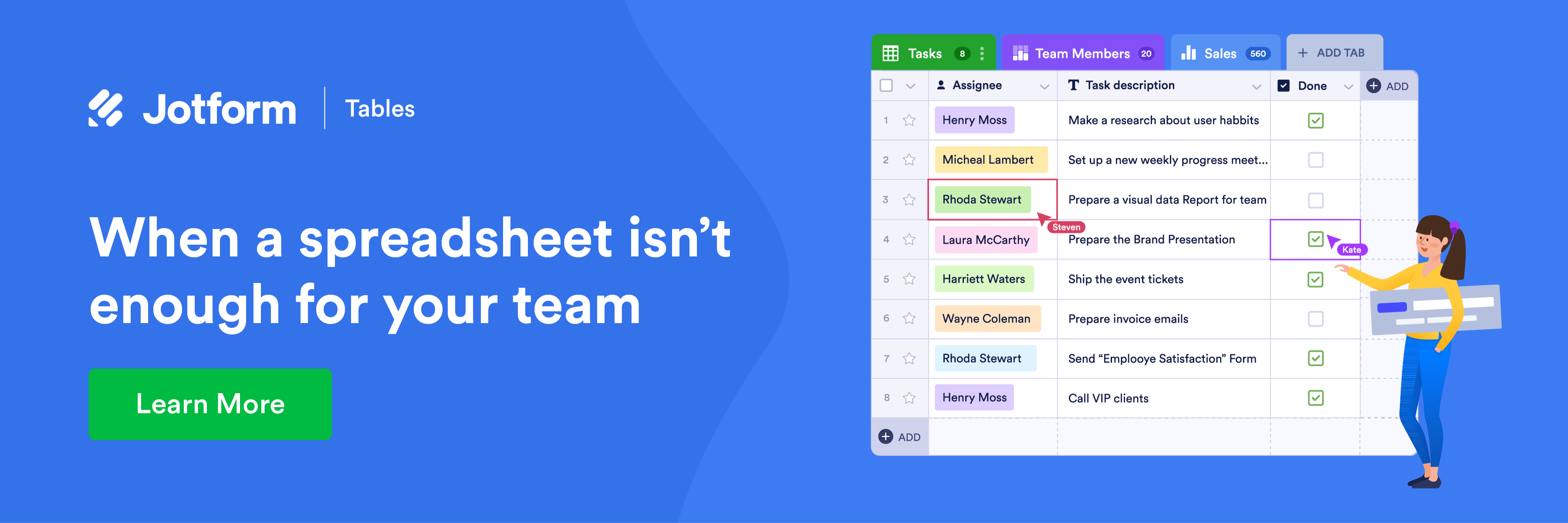Key Takeaways
- Data management involves extracting insights from raw data to meet information needs, rooted in accounting, statistics, and planning.
- Components of data management include storage, security, sharing, governance, architecture, database, and records management.
- Two main strategies are offensive (customer-focused for revenue and satisfaction) and defensive (security and compliance).
- A comprehensive data management strategy includes identification, storage, provisioning, governance, and processing components.
Ninety-five percent of C-suite executives list data management as key to business strategy. Data management allows business leaders to leverage the data they collect from customers and suppliers to propel growth.
Data management is how you extract answers and insights from raw data to meet your information needs. The proliferation of electronic data-collection methods in recent years has created the impression data management is all about technology, but its roots are firmly in accounting, statistics, and planning.
In the 1960s, the Association of Data Processing Service Organizations (ADAPSO) was one of several groups that advocated for data management standards for training and data quality. By the 1970s, the relational database management strategy provided a way to consistently process data and reduce duplicates. Throughout the 1980s, the Data Management Association International (DAMA International) worked to improve education and training in data management.
As computer use became widespread, IT professionals built data warehouses that used relational techniques for offline data analysis. This gave managers powerful new ways to use data for decision-making purposes.
Today, data management shapes corporate strategy and guides decision makers searching for a competitive edge. Research firm IDC predicts that by 2025 users will be creating 463 billion GB of data per day. That mind-boggling volume is priceless with good data management but just noise without it.
Data management includes storage, data security, data sharing, data governance, data architecture, database management, and records management. Once your data management strategy is in place, you’ll glean important insights by using your data to its full potential.
Check it out…
Manage your data in a spreadsheet, calendar, or easy-to-read cards with Jotform Tables.
In this guide, you’ll learn why data management is so important. We’ll begin with an overview of data management techniques you can use to collect and maintain your data, review best practices for data management, and examine the top three data management solutions available.
Why is data management important?
Data is the lifeblood of dynamic organizations. It can help you retain customers and attract new ones, improve your customer service, fine-tune your marketing, and reveal sales trends. But to get the most out of your data, you need to manage it.
There are a lot of advantages to data management:
- You’ll be more productive. Data management makes it easier for you and your employees to find, understand, and communicate information to each other and to customers.
- You’ll save money. By making you more productive, data management reduces costs. Your employees won’t waste time searching for data or duplicating efforts.
- You can react quicker. Data management reveals trends so you can act sooner than your competition.
- You’ll mitigate security risks. Think of all the big security breaches that have been in the news. Since data security is an integral part of data management, you’ll lock down your data and avoid ending up in the news for all the wrong reasons.
- You’ll be able to make more accurate decisions. Data management ensures that you and your employees are reacting to the most up-to-date data.
Common data management strategies
Formulating a data management strategy seems daunting, but there are well-established best practices and proven strategies to choose from. The two basic data management strategies to consider are offense and defense.
In the offensive data management strategy, you’re engaged in customer-focused activities, like sales and marketing. The goal is to increase revenue, profitability, and customer satisfaction. You’ll use this strategy to conduct data analysis and modeling, improve data presentation or integrate different data sources into dashboards.
In the defensive data management strategy, you’re focused on security and compliance. Your goal is to demonstrably comply with regulations protecting customer data and privacy while using analytics to detect and prevent fraud.
A good data management strategy is solid on both offense and defense. There are five additional core components that should be part of your data management strategy:
- Identification of data and what it means, how it’s structured, where it came from, or where it’s located
- Storage that lets you easily access, share, and process your data
- Provisioning that lets you package your data so that it can be reused and shared, and lets you add rules and guidelines for accessing the data
- Governance to establish, manage, and communicate the policies and mechanisms in place for using data
- Processing that lets you move and combine data stored in different systems to provide a single, unified view
How to develop a data management plan
Begin developing your data management plan by considering your goals. Use aspects of both offensive and defensive strategies, and include the five core components of data management. The details of your plan will depend on your company type as well; an educational institution has different data concerns than a healthcare provider.
Evaluate how you currently manage data and identify any shortcomings in your existing plan. If you don’t have a plan, create a wish list of things you’d like to have: real-time access to data, predictive analytics, and role-based dashboards, for example.
Once you’ve created your list, it’s time to start looking at data management software. Investing in one will increase productivity by making your data easily accessible and consistent.
Only consider data management systems that will work with your existing software, including CRM systems, marketing databases, and accounting systems, so you can pull information from your key business systems, analyze it, and make more informed decisions.
Carefully consider the security features of these platforms, how easy it is to integrate data from multiple sources, and how easy it will be to access your data. Later in this guide, we’ll dive into the features and benefits of three common data management systems.
If all of this is overwhelming, consider hiring a data manager. A capable manager can track and analyze your data and refine your data management plan, freeing you to focus on your business.
Regardless of which data management strategy you’re tackling first, make sure your data is protected. Privacy and security should be central to your data management plan. This includes security controls for your database; encrypting data in transit and at rest; educating your employees; and establishing data best practices.
Now that you have a head start on data management, you’ll want to know more about enterprise data management. The next section discusses what enterprise data management is, what master data management is, and the tools you can use for it.
What you need to know about enterprise data management
Enterprise data management is how you put your data management strategy into action.
Think of data management as an administrative process that encompasses data acquisition, validation, storage, protection, and processing. Enterprise data management (EDM) is the next level. It’s how your company creates, integrates, disseminates, and manages all the data that flows in and out of your applications and processes.
EDM creates a structure for delivering actionable insights from raw data that’s often disorganized and full of duplicates. EDM encompasses software, hardware, infrastructure, business logic, and company policies. It requires far-reaching collaboration, including every department from frontline sales staff to the back-office team.
Managing data internally across departments is central to EDM. Three top challenges are data organization, data processing, and efficient data entry. You can collect data from customers and prospects with readily available tools from JotForm.
Effective EDM begins with listening to stakeholders to learn what problems they need to solve. Once you have their buy-in, you can determine your platform requirements, establish policies and procedures, and create data definitions and tagging. Take into account stakeholder requirements, workflow, data dependencies, and the organization’s resilience in case of disruption.
EDM requires explicit policies and procedures for change management, data management, security, and data dependencies. You’ll need to standardize the terms and definitions used to classify data, known as metadata, and choose technology to help you do all of this.
The early stages of formulating your EDM strategy is a good time to begin familiarizing yourself with master data management (MDM), which you’ll need to take your capabilities a step further. MDM is how you develop a “single source of truth,” the data that everyone in the organization uses when making business decisions.
What is master data management?
MDM consolidates enterprise data into a single master reference source to provide consistent, accurate, and complete data across the enterprise. Vigilant MDM is a multistep process of data cleansing, data transformation, and data integration.
Integrating your data management software into your business systems, like CRM and accounting, as we discussed in the last chapter, positions you for an effective MDM initiative. Some key MDM processes include
- Administering business rules
- Aggregating data
- Classifying data
- Collecting data
- Consolidating data
- Distributing data
- Data governance
- Mapping data
- Matching data
- Normalizing data
As you add more data sources, the MDM system identifies, collects, transforms, and repairs your data. As you set quality standards and taxonomies for your data, your MDM software will take care of the rest. In the end, you get accurate, up-to-date, and consistent data that can be used throughout your organization.
One of the ways companies use MDM is to update customer information. For example, you might have customer data in your CRM, order fulfillment, and accounting systems. If the customer contact information changes in the accounting system, MDM updates all three of these systems so you’re not shipping products to the wrong location or following up on service calls at the wrong phone number.
MDM helps companies comply with regulations, including the Sarbanes-Oxley Act (SOX), the EU General Data Protection Regulation (GDPR), and the Health Insurance Portability and Accountability Act (HIPAA). With master data management, companies can show regulators that they have clean, consistent, and accurate data that meets compliance requirements.
Companies also use MDM to improve the customer experience because it pulls in data from multiple systems, giving them that elusive 360-degree view of the customer. This data is used in customer service, sales, and marketing departments to upsell and cross-sell, send personalized offers, or troubleshoot a problem.
For example, a customer may contact a company about a recent purchase. With the data all in one place, the customer care agent can quickly see what the customer is calling about and provide faster service.
The top master data management tools
There are plenty of tools available for companies that want to embark on MDM. According to research firm Gartner, MDM tools need to include workflow, data modeling, data governance, and support for multiple domains, multiple usage scenarios, and multiple implementation styles.
The leaders in MDM tools are Informatica and Orchestra Networks (which has been acquired by TIBCO). Informatica’s customers give Informatica MDM products above average scores for initial implementation and deployment as well as account management. Orchestra Networks’s single, integrated offering also scored above average with its customers, as the majority of them can integrate data in real time or near real time.
Gartner identifies SAP Master Data Governance and SAP Commerce Cloud Product Management as top MDM tools. These two products are easy to integrate, especially with other SAP offerings, and have proven multidomain capabilities. Other vendors that scored high on the Gartner Magic Quadrant, a vendor comparison chart to rate technology companies, are Semarchy, Profisee, Stibo Systems, and IBM.
Now that you know more about EDM and MDM, you’re ready to learn about data management techniques.
In the next chapter, you’ll find out about the best ways to manage your data, including how to improve data management. You’ll discover why controlling the point of data entry can help you improve data quality and how controlling backup and replacement of data affects the management process. You’ll also learn how regular maintenance can ensure data quality.
Top data management techniques
Reaping the full benefits of enterprise data management and master data management requires you to implement a data management strategy. Here we explore the top data management techniques for collecting and storing the clean, reliable data essential to making informed business decisions.
Inventory your existing data
Managing your data begins with identifying your existing data assets so you can integrate different databases to achieve a single source of truth.
Many companies store data in multiple locations, for example, in separate databases for each application, along with cloud-based storage apps like Dropbox for easy employee access. Talk to stakeholders in multiple departments to gather this information and begin mapping out where all of your data is currently stored.
Next, you’ll need to create a way to track this data. This can be as simple as a spreadsheet or as complex as using a tool to help you create a full data inventory. Start by including where the data is stored, its purpose, the file type (for example, you may have a bunch of Excel spreadsheets full of customer data), subjects or keywords for the data, and how often it’s updated.
Review your business goals
Top data management techniques take into account what you want to get out of your data and how it lines up with what you want from your business. For example, do you want to create or improve automation and processes, or do you want insight into customer buying habits and patterns? What you do with your data needs to align with your business goals.
Make data security your top priority
Data security is critical to data management. Regulations like Sarbanes-Oxley, the Health Insurance Portability and Accountability Act (HIPAA), and the EU’s General Data Protection Regulation (GDPR) all come with stringent data security standards.
If you handle payment information, you also have to contend with the Payment Card Industry Data Security Standard (PCI DSS). Running afoul of regulations or industry standards can cost your company hundreds of thousands of dollars in fines and damage your reputation.
Encryption is one of the most effective techniques for keeping your data secure. Encrypt your data both when it’s in transit and at rest, with decryption keys stored separately.
In addition, limit who has access to your data by creating role-based user accounts. Make sure employees and partners have access to enough data to do their jobs effectively but not full access to all company data.
Immediately revoke access to data when an employee leaves the company. Require everyone to use strong passwords that include uppercase and lowercase characters, numbers, and special characters.
Make your data accessible
A big part of data management is striking a balance between data security and easy access to the data your team needs to do their jobs. For example, customer service agents need immediate access to customer data. Set up role-based permissions for data so that team members get what they need without compromising the security of your entire data inventory.
Give employees tools so they can quickly find the data they need. For example, a natural language interface allows employees to ask, “What percentage of our sales were awesome widgets?” Other helpful tools allow you to easily add role-based dashboards.
Data management isn’t a “set it and forget it” procedure. Review your data management plan regularly to ensure it still meets your company’s needs. Regular reviews are also crucial for data security, as external threats only get more sophisticated. These top data management techniques can help keep your data accessible, reliable, and secure.
Limit your data entry points
The more data entry points you have, the bigger your risk of duplicate or incorrect data. According to a study by the Journal of the American Medical Informatics Association, the error rate in manually input lab results was 3.7 percent, while the standard in most industries is less than 1 percent.
For instance, your customers may fill out paper forms. Team members then have to manually input these forms into your system. They may not be able to read a customer’s handwriting. Or perhaps your team members take information from customers over the phone, and they mistype the customer’s address. Human error can cause all sorts of data problems, so it’s important to consider where your data is coming from.
The key to accurately inputting data is to streamline data entry points. Jotform allows you to create customized forms, including order forms, feedback forms, and contact forms that dramatically reduce the potential for data entry errors.
Update your data frequently
More than half of surveyed executives report feeling overwhelmed by too much data. They only want what’s relevant to make better decisions, but frenzied data collection has swept up data that’s irrelevant or redundant along with what’s useful.
Removing irrelevant data through “data cleansing” frees up much-needed space and reduces the feeling of being overwhelmed. Data cleansing is a one-off process that involves purging data anomalies and unnecessary data.
In addition to standardizing the entry point for your data, look for tools that can help you validate the accuracy of your data and identify duplicates. List imports and email hygiene tools can help you verify accuracy.
As you cleanse your data, report back to the different departments so that they’re on board with new data accuracy and collection standards. Always back up your existing data before you begin a data cleansing effort, in case something goes wrong.
Control data backup and recovery
It’s extremely important to control data backup and recovery in case the worst happens. Even a minor error can cost you valuable lines of data. There are two ways you can do this: Back up data onsite, which can be costly, or use a cloud-based service. Make sure that whatever you choose will be accessible in the event of an emergency so that you can quickly restore your data and minimize the disruption to your business.
An onsite data backup can be on hard drives or servers stored at your location. As you collect more data, you’ll need to expand your storage space. Cloud-based backups range from consumer-grade options like Carbonite to enterprise-grade services from AWS and Microsoft Azure.
Ensure quality by reviewing and maintaining data
It’s important to review and maintain data to ensure you’re working with quality data sets. Unlike data cleansing, data maintenance is an ongoing process. Regularly review and verify your data to be certain it’s still reliable and usable. Reviewing and maintaining data also makes your database run faster by removing unnecessary files.
Rebuilding your database indexes is an important part of data maintenance. As you delete irrelevant data and verify it, you’ll create index fragmentation, which causes gaps in your data and slows down access to your data.
Use these data management techniques to keep your data clean and usable. In the next section, you’ll learn about data management best practices, including data privacy, storage, and archiving.
Top data management best practices
There are well established best practices for data management that help maximize your results. These best practices deal with data access, documentation, data privacy, data sharing channels, storage, and archiving. Using these best practices will ensure your data is secure, accessible, and usable.
You need trained staff who know how to use standard data management processes. Technology allows you to set access privileges, create data-sharing channels, ensure data privacy, and set up storage and archiving. Here’s what you need to know.
Make data access and data collaboration simple
Everyone on your team needs access to your single source of truth so they can collaborate on solutions with teammates, partners, suppliers, and other relevant third parties. The best practices for data access and data collaboration are to set role-based permissions for different types of employees and partners. Strike a balance between convenience and security that allows individuals access to the data they need, but no more.
Create data documentation users can understand
Data documentation includes data dictionaries, readme files, and embedded metadata. Good data documentation gives users meaning and context so they understand the data and can use it to solve business problems. Your data documentation should explain how to interpret data correctly. The documentation can vary according to the complexity of the data and the needs of your team.
Data documentation needs to be in place before you begin collecting data. A data dictionary is necessary to answer key questions about your data. Check out standards for data documentation as a starting point for your own use cases.
Ensure data privacy
Protecting data requires establishing procedures for handling data correctly, beginning with how data is collected and stored, regulatory compliance, and protocols for how it’s shared with third parties.
Data privacy differs from data security in that it deals with your internal processes versus mitigating external threats. For example, good data security keeps hackers from accessing your data. Data privacy makes sure you have permission to share users’ information with third parties.
Data protection is a key part of data privacy. Your team will need to be trained on best practices for keeping your company data secure. This includes the processes and procedures you use to make sure your data is collected, shared, and used in accordance with your policies and applicable regulations.
Data privacy has always been a serious responsibility but is now a major potential liability as well. Poor data privacy practices risk serious violations of the regulations discussed earlier in this guide. Liability for a major data breach can cost your company millions of dollars.
Have the proper data sharing channels available
A key part of your data management plan is enabling data sharing channels. Data sharing is essentially sharing your data with multiple applications and/or users. Most companies share their information with outside partners and suppliers as well as employees.
The channels you use will vary based on how your users consume data. For example, executives may want to view data on dashboards to see the overall metrics of the business. Customer care agents may want a list of purchases that a customer has made so they can help that customer.
You might use an analytics dashboard to dive into sales metrics or use a CRM system to examine a customer’s service call history. You can make all of this data available by integrating CRM systems and analytics dashboards, as well as other systems that employees and partners may use, with your master database.
Application programming interfaces (APIs) selectively open up data to third parties, such as your suppliers. An API restricts access to only relevant data and systems while shielding the rest of your data. Many APIs are readily available. You don’t necessarily have to program one from scratch.
Choose the right data storage
How you store your data will affect how well you manage your data. When you choose a data storage solution, you can select on-premises servers, a cloud-based solution, or a combination of both, known as hybrid storage. Cloud storage is an affordable way to store massive volumes of data without purchasing expensive servers.
There are also several on-premises storage types available. Direct attached storage, like USB drives and external hard drives, can be connected directly to your computers. Network-attached storage (NAS) is the central server storage model, where everything is kept on servers and shared across the network. Some companies still use offline storage like optical disk (CD or DVD) backups as well.
What you need to keep in mind, regardless of the storage method you choose, is how available your data will be and how secure it is. Look for storage with high uptime (99.999 percent availability), as well as automatic backup and disaster recovery. You’ll also need to know how much it will cost to get more storage, as well as how secure it is. This includes how it’s encrypted, both when it’s being stored and when in transit.
Archive old data to reduce costs
You can archive old data that you need but aren’t currently using to free up space and reduce costs. Typical archived data includes older data that’s still important to the company or data that needs to be kept for compliance reasons, such as spreadsheets, email, and other communications.
Storage meant for data archiving often costs significantly less than storage for active data because you’re not accessing the data multiple times a day and piping it through your applications. It also reduces the amount of data you back up, so your backup storage costs will be lower.
Now that you know more about the top data management techniques, let’s look at data management solutions. The final chapter of this guide discusses the common data management solutions available, what they provide, and how data management tools and applications can aid the overall process.
Top data management solutions
The success of your data management initiative depends on how well you collect, organize, and use your data. To do all well, you need data management software.
Data management platforms collect and manage data from both online and offline sources. Data management software aggregates your data so you can use it. Data management tools and applications connect to your data source via APIs, webhooks, or direct database connections to help you accomplish tasks like creating data visualizations for reports.
These data management solutions are critical to managing your data effectively. Jotform has tools to quickly and easily integrate data collection with your data management tools so you can get the most out of your data.
Here’s a rundown of how data management platforms, software, and tools and applications help you extract the most value from your data.
What a data management platform provides
A data management platform is a centralized system for collecting and analyzing your data. In its most basic form, it imports data from all of your systems to a single place. In a more complex setup, it includes tools to aggregate data from multiple sources and data analytics tools for discerning trends within that data.
Your data management platform must be able to collect data from multiple sources, including online forms, mobile devices, partner systems, and internal sources. This includes both structured data from spreadsheets and relational databases and unstructured data like social media posts, PDFs, and Word documents. All this data must be integrated and stored so that it’s usable.
Using a data management platform provides you with control over your data for multiple use cases. For example, a data management platform could collect customer data from multiple sources, then analyze and organize it to segment your customers by purchase history.
Data management platforms can be housed onsite. However, cloud-based data management platforms running on AWS, Oracle, and other services, as well as open-source platforms like EDB Postgres are also available.
What data management software provides
Different from a data management platform, data management software is a program like Microsoft MySQL, PostgreSQL, Microsoft Access, or Oracle that handles queries on your data. Use it to create, edit, and maintain your database files and records in the form of structured tables, fields, and columns.
The term “data management software” is used interchangeably with database management software. Both aggregate and secure your data, ensure its integrity, and handle different types of queries.
Some data management software requires a lot of coding knowledge to create databases and add-on applications. The better systems allow you to quickly build databases and begin using applications without any coding knowledge.
Data management software prepares your data for analysis, secures it, and lets you apply policies to identify and manage it. Your data is kept throughout its lifecycle. You can create policies and rules for your data, like what constitutes personal information or how long you retain customer data. You can also automate tasks, like importing data and populating your database fields with it.
The software can help with data quality by standardizing data into fields, eliminating duplicate data, and protecting it against unintentional changes. This, in turn, prepares your data for analytics and reporting, which you’ll do with data management tools and applications.
How data management tools and applications can help
With so many ways to manage your data, you should look into data management tools and applications to import and integrate data, create policies, and run analytics. Some data management platforms and software suites come with these capabilities built in. However, you may want to explore other standalone options that have specific functionality.
Data management tools and applications are particularly helpful for data analysis. Some tools will cleanse your data and perform quality checks beyond what your data management software does. You can then run analytics and use tools with AI and machine learning to glean insights from your data, like forecasting sales for the winter holiday season.
These tools use learning algorithms to pick up on trends that they find in data sets. Data visualization tools can create graphic representations of your data, like pie charts and line graphs, that can be easily (and quickly) consumed by busy executives and employees.
You can also use data management tools to import and export data from your data management platform in different formats, like Excel and CSV. Some tools will let you search for submissions and then delete them, like when you test out new forms on your website. Others will combine data from different forms into a single file.
Data management applications let you access your data on mobile devices. You can build an application that allows customers to book service appointments.
Data management requires technology, and using data management platforms, software, and applications and tools in concert with one another can help you get the most out of your data.
Conclusion
You’ve learned a lot about data management, from why it’s important to the tools you’ll need to make it a reality in your organization. This guide discussed common data management strategies and how to start developing a data management plan. You also learned about enterprise data management, master data management, and the top master data management tools.
Data management techniques, along with data management best practices, are necessary for an effective data management strategy. It’s important to control your data entry point to improve your overall data management, remove irrelevant data, and control the backup and replacement of your data. It’s also important to continually review and conduct maintenance on your data to ensure its quality.
This guide also discussed data management best practices, from making sure all relevant parties can easily access and collaborate on data to the importance of data documentation, data privacy, data sharing, and storage and archiving.
With this knowledge, you can now start implementing a data management strategy. As you continue to collect, store, and analyze data, continually revisit your strategy and toolkit to make sure it still meets your needs and gives you the useful data you require.













Send Comment:
2 Comments:
More than a year ago
Data security is useful and safeguards valuable information. It is why securing your data with the best data protection provider is very important.
More than a year ago
Being an high school counselor is just exactly as tough as it sounds :) Taking care of the students, tolerate them as they are going through puberty, make sure that they are receiving a good education and occasionally listen their break up stories... it is a handful for sure.
Don't get me wrong, I love what I am doing and I am proud of the role I play in my students' lives as a counselor. I was only a little worried that I wasn't providing enough support to their academic and personal lives from time to time.
I used to keep my session records on paper and wasn't able to process the input well enough. Sharing the information and being on the same page with their teachers and parents is key in our profession. The paper records were not as reliable and effective as I'd liked.
As a person living in 2019, I obviously know that everything moves around data now. So I started doing some research in terms of educational technology and data management in schools. I figured out that recording the data on a computer allows the communication among teachers and parents in a way more effective way.
Managing the data properly, immediately rewarded me with better progress on my students. Being able to keep the data secure (as a counselor I am dealing with sensitive personal information) was crucial too.
Seeing this guide, I am seeing that I am on the right track of better managing my data and subsequently becoming a better counselor.